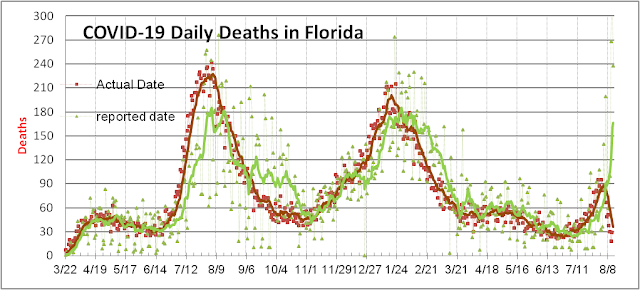Sweden and Norway – A Contrast in Strategies and Outcomes
On March 14th we wrote a post noting how
remarkably low the Scandinavian countries’ COVID-19 mortality rate appeared to
be (although we cautioned that the statistics were weak and results could
easily evolve). Since that optimistic start Sweden has
chosen a highly unusual strategy to deal with the Pandemic and as a consequence, has
achieved very different results than Norway and Denmark.
While Norway and Denmark closed their borders,
restaurants and ski slopes and told all students to stay home in March, Sweden
shut only its high schools and colleges, kept its preschools, grade schools,
pubs, restaurants, and borders open and put no limits on ski slopes. In fact,
Sweden and Brazil are the only two major countries in the world that have not
imposed any lockdown of significance.
Sweden has chosen a strategy that Boris Johnson had intended to employ
in the UK but quickly abandoned when the public got wind of the herd immunity
theory backing his minimalist approach.
Sweden’s rationale for this approach is not herd immunity – at least in
the public defense of their laissez-faire approach. Their argument is that the Swedish have
always complied with government recommendations so they feel that advising
people to practice social distancing and not to travel should be sufficient to
slow the virus so that their hospitals can handle all the sick patients
appropriately. Eventually, herd immunity
will take over and stop the Pandemic. This
approach looks like it is heading over the cliff.
All 3 countries have experienced very high infection
rates as most EU countries have due to their initial open border policies. While Sweden has continued to maintain open
borders, Norway banned non-residents from entering the country on March16th
after they had locked down most of the country’s institutions on March 12th. Their infection curve basically peaked
broadly on March 29th. Sweden’s infection curve has still yet to
peak reaching 726 newly confirmed cases today, April 8th.
| Country | Infections | Infections | Deaths | Mortality | Mortality | Death | tests | Serious |
| /million | Coincident | Estimated | /million | /million | Critical | |||
| Norway | 1,125 | 6,086 | 101 | 1.7% | 2.0% | 19 | 21,009 | 78 |
| Denmark | 934 | 5,402 | 218 | 4.0% | 6.3% | 38 | 11,050 | 127 |
| Sweden | 835 | 8,419 | 687 | 8.2% | 12.5% | 68 | 5,416 | 678 |
The table above shows that all 3 countries’
infections per million population are near 1000.
However, the death count per million is significantly higher for Sweden (68)
than for Denmark (38) or Norway (19). This
is associated with the significantly higher mortality rate for Sweden – which we
estimate to be a very high 12.5% - nearly as high as that for the tragedy in Spain,
13.2%. There is nothing in the gross
demographics that could explain this huge and statistically significant
discrepancy between Norway and Sweden such as (1) median age: 39.8 vs 41.1, or
(2) net migration: 28,000 vs 40,000 for Sweden, or (3) urban concentration,
both near 83%. However, Norway has done a much better job of testing its population with 21,009 tests per million citizens. Moreover, Norway also has a much smaller number of critical patients that could turn into deaths over the next week.
Sweden has not published
its death statistics but we would bet that a significant portion of their
dead is older and/or have comorbidities. Older people were
asked but not compelled to isolate themselves.
When everybody else is in the public square enjoying a nice day this
past weekend in Stockholm, the elderly
also joined the crowd. This intermixing
is deadly for the elderly but somehow the advice did not get through that they
need to isolate and stay home. This is
the problem with an advisory vs a government-mandated shutdown. Moreover, their advisory was only for those
70+, clearly not considering the Italian data that show people in the 60-69 band had a
mortality of 7.1%. Sweden needs to widen its testing immediately, to
impose stringent travel restrictions to permit only essential businesses to
operate, and to reduce the congregation maximum from 50 to 2.
We think this has been a very expensive experiment by
the Swedish government that will eventually cost over a thousand unnecessary Swedish
deaths even if they corrected themselves tomorrow. The longer they delay the higher the cost in
terms of lives lost.




Comments
Post a Comment